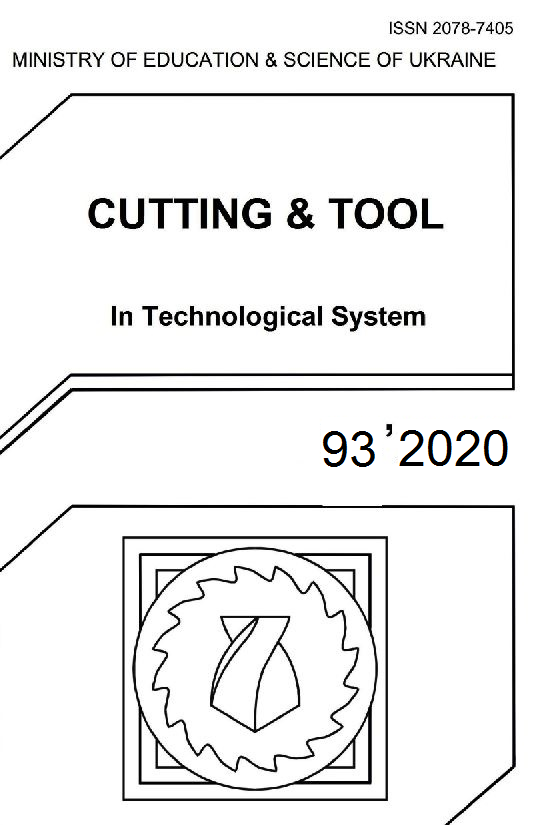MATHEMATICAL MODELING OF TRANSMISSION START WITH AN ASYNCHRONOUS ELECTRIC MOTOR
DOI:
https://doi.org/10.20998/2078-7405.2020.93.05Keywords:
elastic coupling, mechanical feedback, elastic characteristic, oscillation process, rotational mass, starting torque.Abstract
The most difficult moment in the work with an asynchronous motor is the launch. And the more powerful drive is the more difficult launch. This is due to certain features of the asynchronous motors: a limited starting torque and starting throws of the current of the stator motor chain. The mathematical modeling of oscillating process of actuation of the actuator with an asynchronous motor, which includes an elastic coupling with nonlinear mechanical feedback, is carried out. The influence of the type of elastic characteristics of the coupling on the magnitude of the amplitude and frequency of the oscillation process and its time was studied. A single-mass rotational system model was used for the studies. According to the Runge-Kutta method, the oscillation processes of starting the transmission of a machine unit with an induction motor were investigated. To determine the coefficient of vibration isolation, a system with an elastic coupling having a linear elastic characteristic was calculated. A study was also conducted in the case where the coupling determines the elastic characteristics of the Duffing type "soft" and "hard" type.References
I. Sydorenko, V. Kurgan Synthesis of target elastic characteristics on the basis of elastic move with nonlinear mechanical refractory connection. Bulletin of the Khmelnytsky National University, 2017, no. 5(2), pp. 26-31.
Szolc T., Konowrocki R. Influence of Various Control Strategies on Transient Torsional Vibrations of Rotor-Machines Driven by Asynchronous Motors. In: Cavalca K., Weber H. (eds) Proceedings of the 10th International Conference on Rotor Dynamics – IFToMM. IFToMM 2018. Mechanisms and Machine Science, 2019, vol 63. Springer, Cham.
Wang L., Jia Z. Analysis of the Soft Starting of Adjustable Speed Asynchronous Magnetic Coupling Used in Belt Conveyor. Communications in Computer and Information Science, 2018, vol 923. Springer, Singapore.
Zhang Q., Lu Q. Analysis on Rigid-Elastic Coupling Characteristics of Planar 3-RRR Flexible Parallel Mechanisms. Lecture Notes in Computer Science, 2017, vol 10463. Springer, Cham.
V. Olshanskiy, V. Burlaka Free oscillations of an oscillator with nonlinear positional friction. Ukrainian Journal of Mechanical Engineering and Materials Science, 2018, no. 4(2), pp. 50-57.
Hmida A., Hammami A. Modal Analysis of Spur Gearbox with an Elastic Coupling. Applied Condition Monitoring, 2017, vol 5. Springer, Cham.
X. Chen, J. Hu Bifurcation and chaos analysis of torsional vibration in a PMSM-based driven system considering electromechanically coupled effect, Nonlinear Dynamics, 2017, no. 88, pp. 277–292.
A. Andrukhiv, B. Sokil Asymptotic method in investigation of complex nonlinear oscillations of elastic bodies, Ukrainian Journal of Mechanical Engineering and Materials Science, 2018, no. 4(2), pp. 58-67.
A. Andrukhiv, B. Sokil Resonant phenomena of elastic bodies that perform bending and torsion vibrations, Ukrainian Journal of Mechanical Engineering and Materials Science, 2018, no. 4(1), pp. 65-73.
Wang C., Sun Q. Analysis on Asynchronous Start Permanent Magnet Synchronous Motor Cogging Torque Optimization Based on Equivalent Magnetic Motive Force, Lecture Notes in Electrical Engineering, 2018, vol 423. Springer, Singapore.
Nitzan S., Zega V. Self-induced parametric amplification arising from nonlinear elastic coupling in a micromechanical resonating disk gyroscope. 2015, Sci Rep 5, 9036, doi:10.1038/srep09036.
G. Arkhangelsk Efficiency of using an elastic coupling with an extended section of quasi-zero stiffness. Machine parts, 2015, no. 51, pp. 17-22.
Downloads
Published
Issue
Section
License
Copyright Notice
Authors who publish with this Collection agree to the following terms:
1. Authors retain copyright and grant the Collection right of first publication with the work simultaneously licensed under a Creative Commons Attribution License that allows others to share the work with an acknowledgement of the work's authorship and initial publication in this Collection.
2. Authors are able to enter into separate, additional contractual arrangements for the non-exclusive distribution of the Collection's published version of the work (e.g., post it to an institutional repository or publish it in a book), with an acknowledgement of its initial publication in this Collection.
3. Authors are permitted and encouraged to post their work online (e.g., in institutional repositories or on their website) prior to and during the submission process, as it can lead to productive exchanges, as well as earlier and greater citation of published work.

